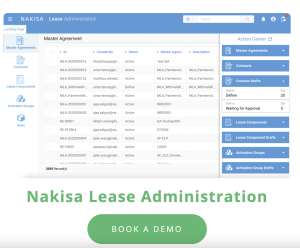The world’s response to the COVID-19 pandemic has provoked changes to both work processes and workforces across every industry. This shift has also added a new wrinkle to the energy sector, which was already experiencing declining oil prices due to the Russia-OPEC price war.
For global players like the Oil Majors, as well as for oil field services companies, these changes have evolved over many geographic regions where different infection levels and governmental responses have layered in complexity. For those operating the exploration, production, and distribution assets, there’s a limit to how much work can be done remotely, and the safety and operational risks to employees working in proximity to one another are real.
“In oil, gas, and pharmaceuticals, outside workers sometimes outnumber employees by at least two to one.”
– Arun Srinivasan, Head of Strategy and Customer Operations at SAP Fieldglass
Hiring contractors rather than full-time employees is common in the energy industry, as there are many benefits on both sides. Depending on what skills are needed and where, being able to tap into a global pool of engineers and support staff adds greater flexibility to any given project. For certain remote operations, contracting may be the most realistic staffing model.
In a 2017 article in the Wall Street Journal, Arun Srinivasan, Head of Strategy and Customer Operations at SAP Fieldglass said, “In oil, gas, and pharmaceuticals, outside workers sometimes outnumber employees by at least two to one.”
The numbers underline the trend:
- According to an April 2017 socially responsible investor briefing, Shell contract workers numbered greater than 190,000
- According to the 2017 Royal Dutch Shell Plc Second Quarter Results, by mid-2017, the number of Shell employees was 85,000
Adjusting the fixed or variable components of the cost structure is a critical action to take to lower the cost cycle, and in March 2020, Ernst & Young recommended this approach for the oil field services, stating: “Move costs from fixed to variable to increase resilience and agility. This is especially important as cash becomes scarce. A big opportunity is available around more agile employment strategies with more on-demand variable staff, as opposed to a company’s own personnel and infrastructure, outside of core regions. Technology will play an important role in assuring the service quality of contingent staff.”
In this light, relying on contractors might make even more sense today than in times of sustainable price ranges.
With the two trends occurring simultaneously—a new challenge to the workforce and how we work, coupled with a potentially increasing reliance on contractors across the energy industry—companies are taking various actions to lower costs; from decreases in CAPEX spend to shutting down assets that are not viable right now. The oil and gas industry has experience with responding to downturns, making it uniquely suited to weathering and solving the impacts resulting from the pandemic.
How to take control and plan for resilience in our current climate? A recent article by Ernst & Young offers direction: “You might think that everything that could be done was done during the last downturn. However, digitalization technology has moved on substantially from where it was then, and there is now another population of cost-reducing activities available. These often do involve a significant amount of organizational change, which may have deterred implementation up to now. However, in the current situation this resistance has evaporated.”
Having up-to-date visibility into global contractor options, as well as having the ability to plan the different scenarios needed to respond to the current climate efficiently, is not only highly desirable,it’s also possible.
Cloud-based organizational design solutions offer a single source of truth for contractor management, the ability to model the increased or decreased need for different segments or geographies, as well as the functionality to easily factor in and overlay COVID-19-related tagging and information.
Moreover, an HR solution empowers decision-makers by offering a centralized view from disparate data sources. What makes this even more exciting is that the new cloud-based technologies unlock secure collaboration, visualization, analytics, and modeling in a manner that complements the current remote workforce model for staff that aren’t manning operational assets in the field. Additionally, the solution helps organizations achieve the goal of actionable information for decision makers in a more efficient manner than traditional processes, contributing to cost reduction and reduced time to value.







